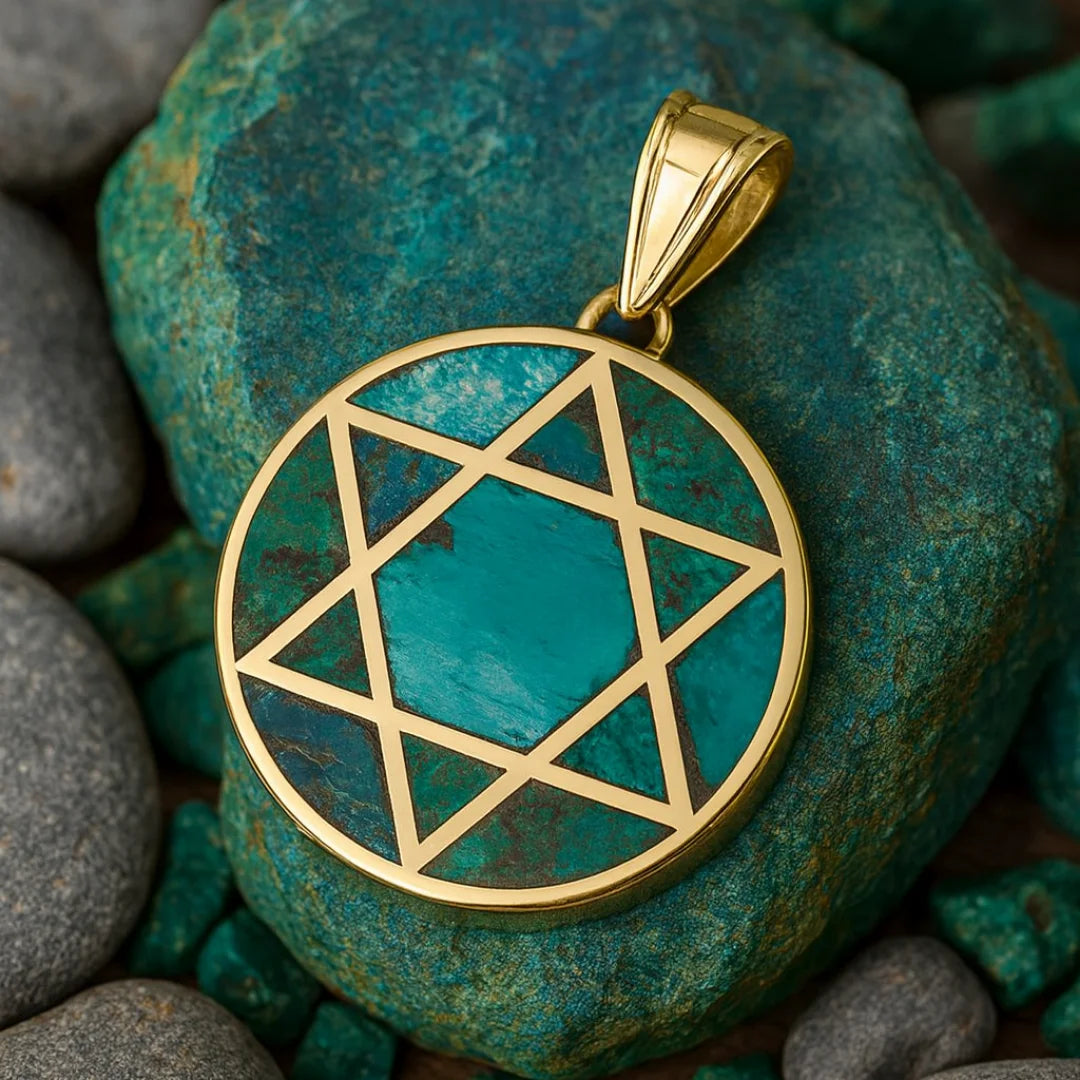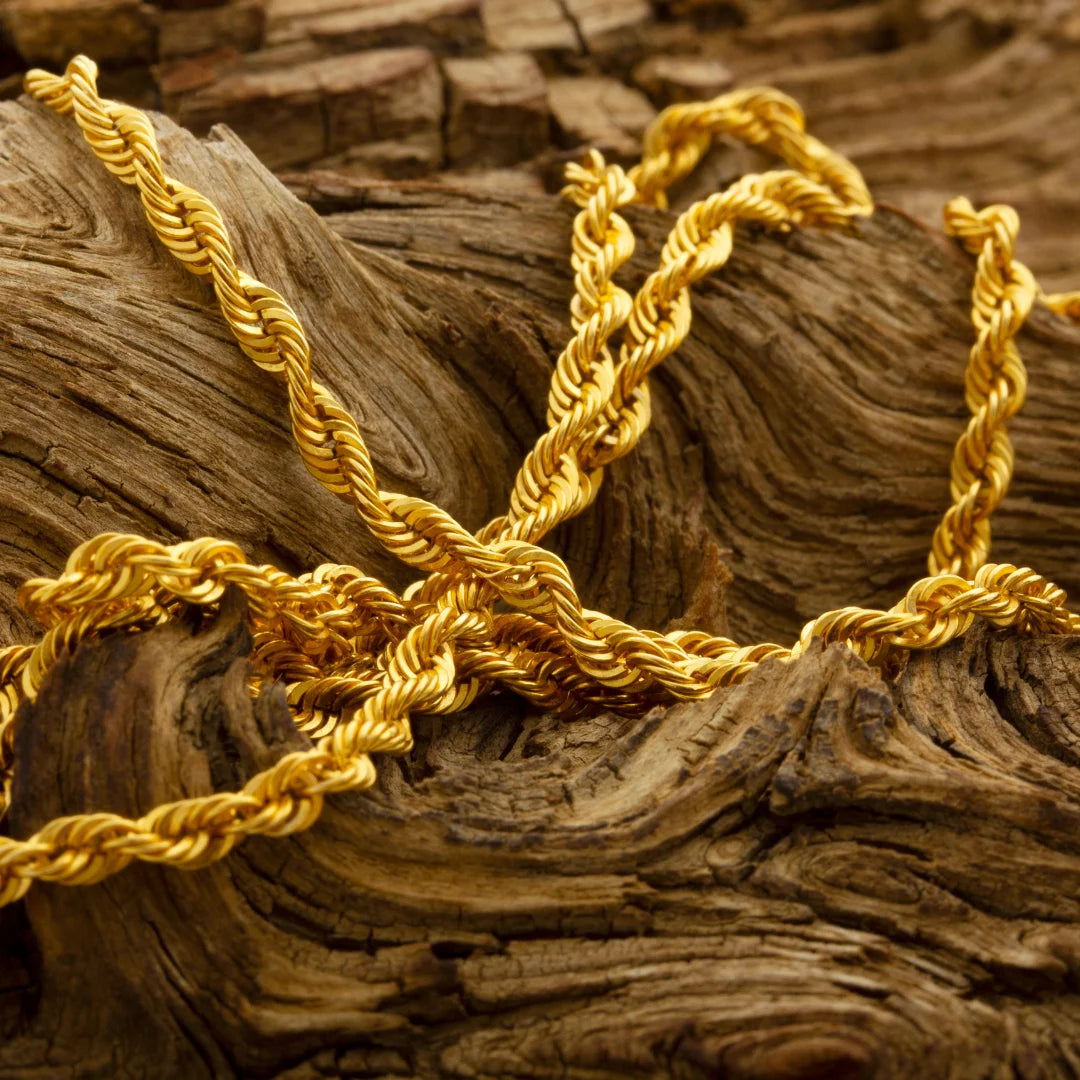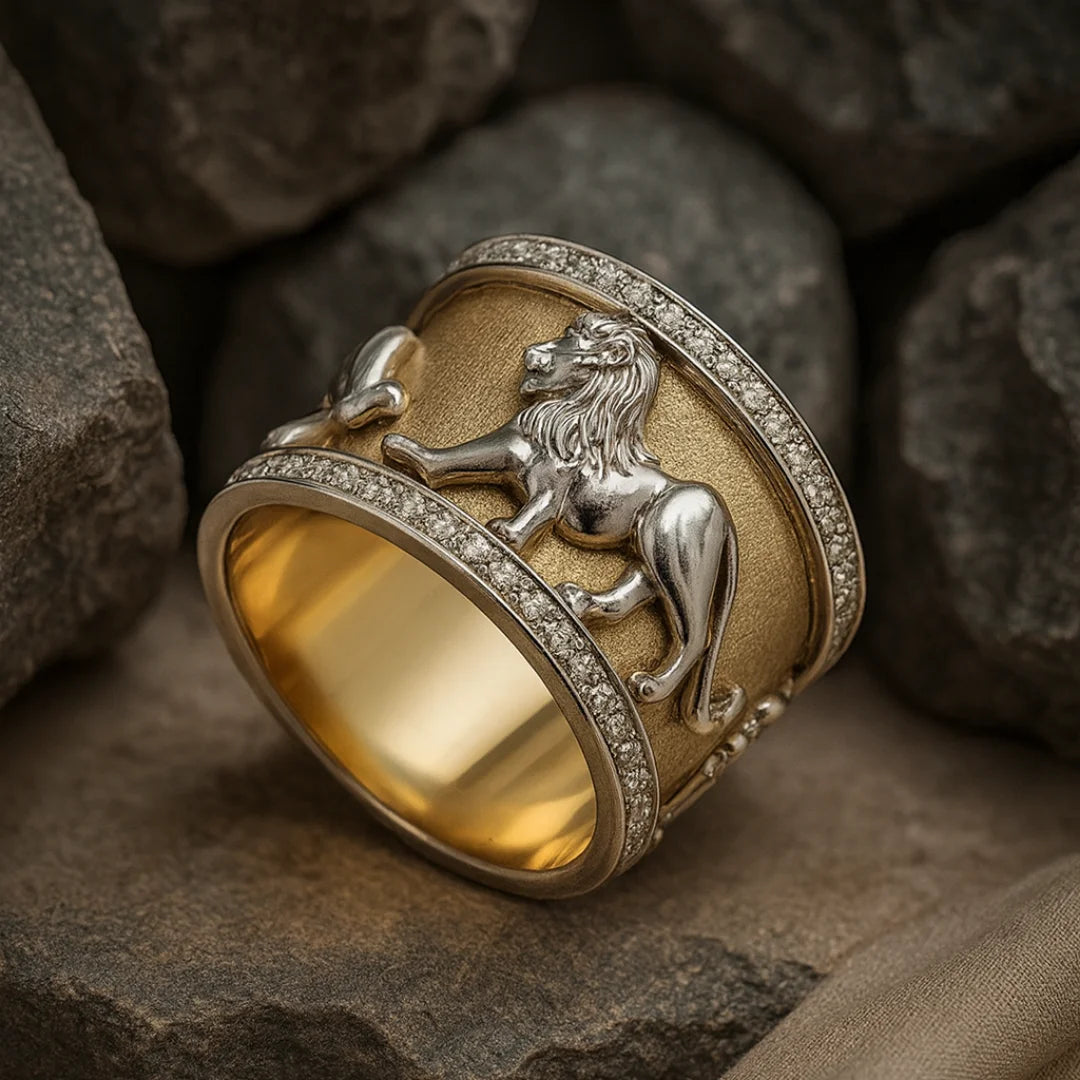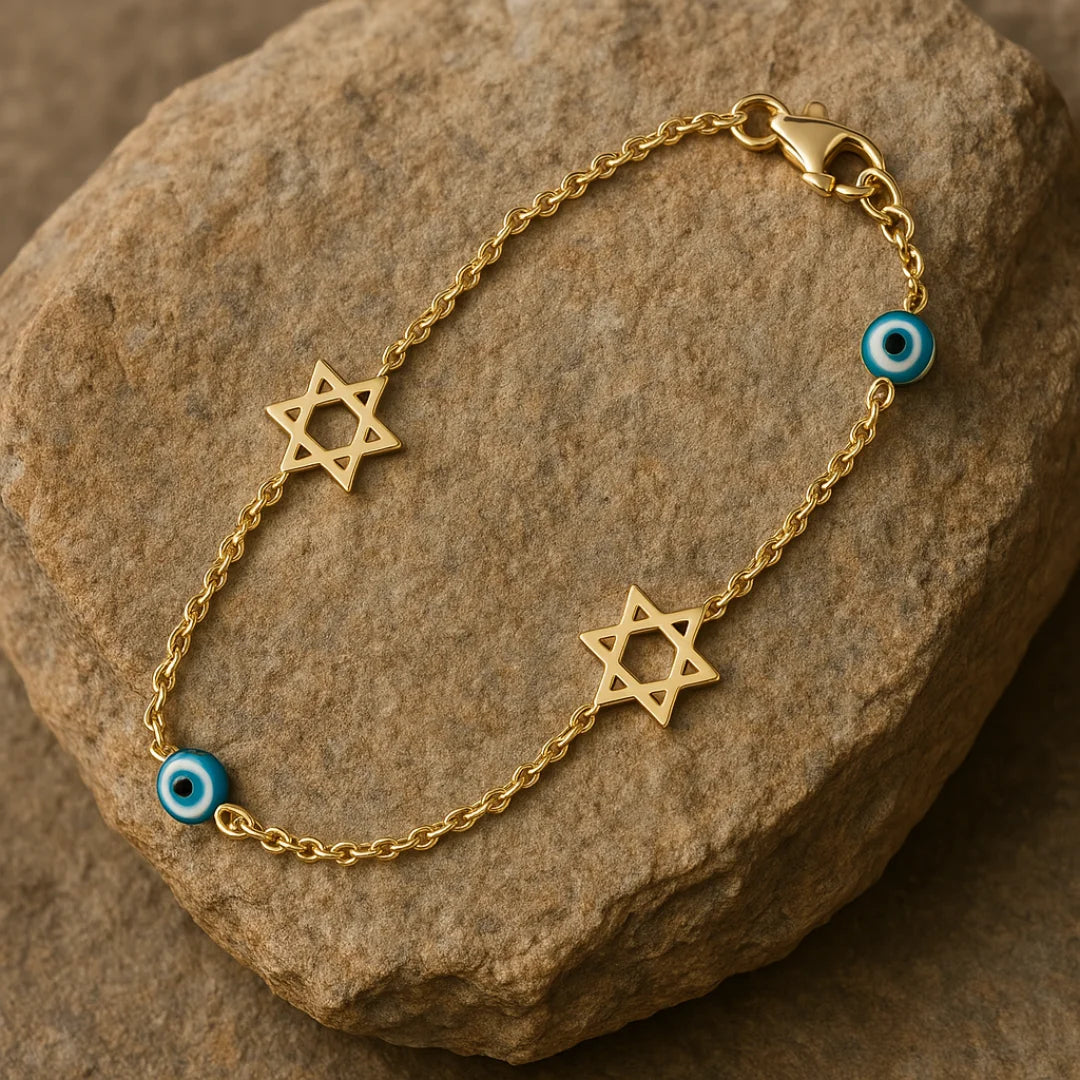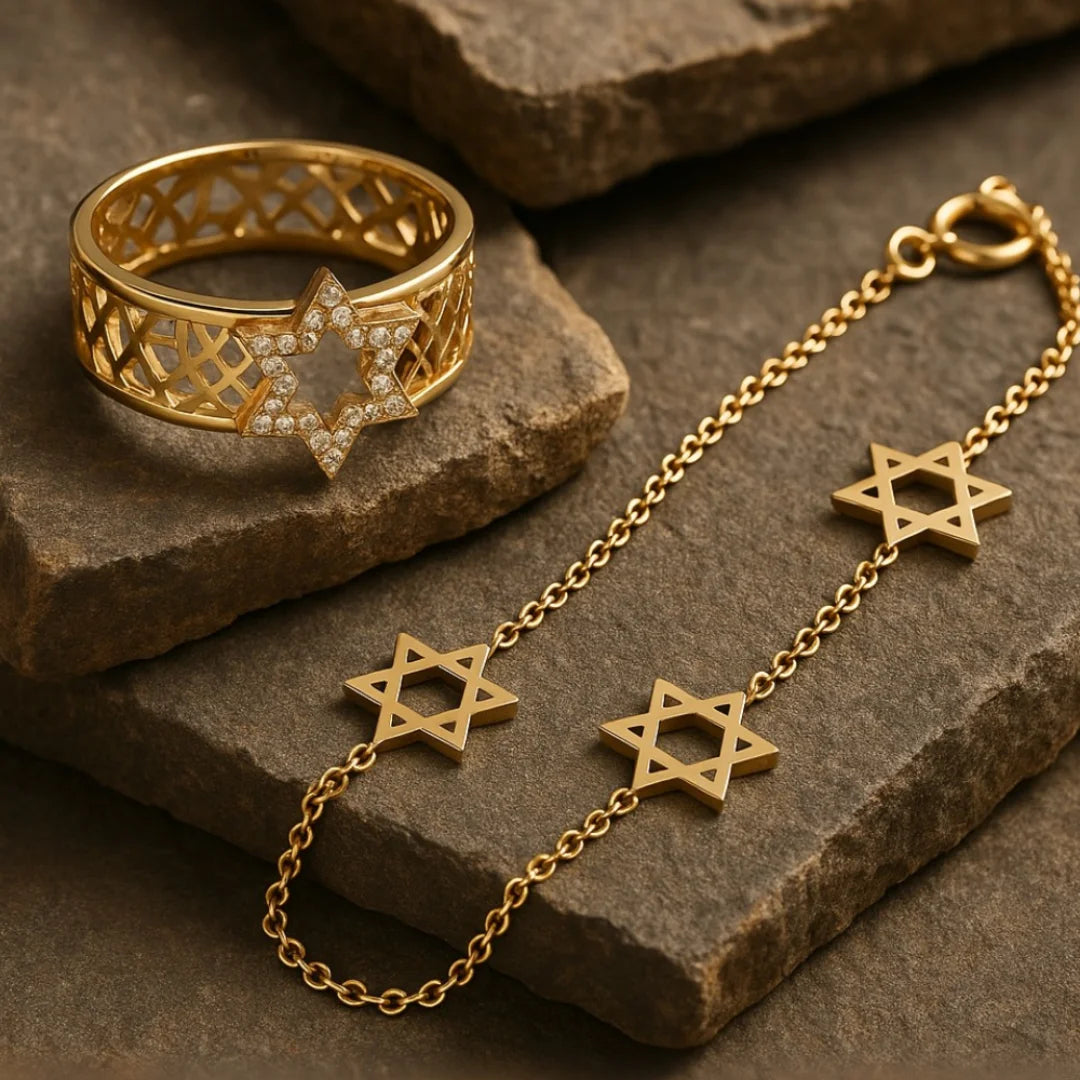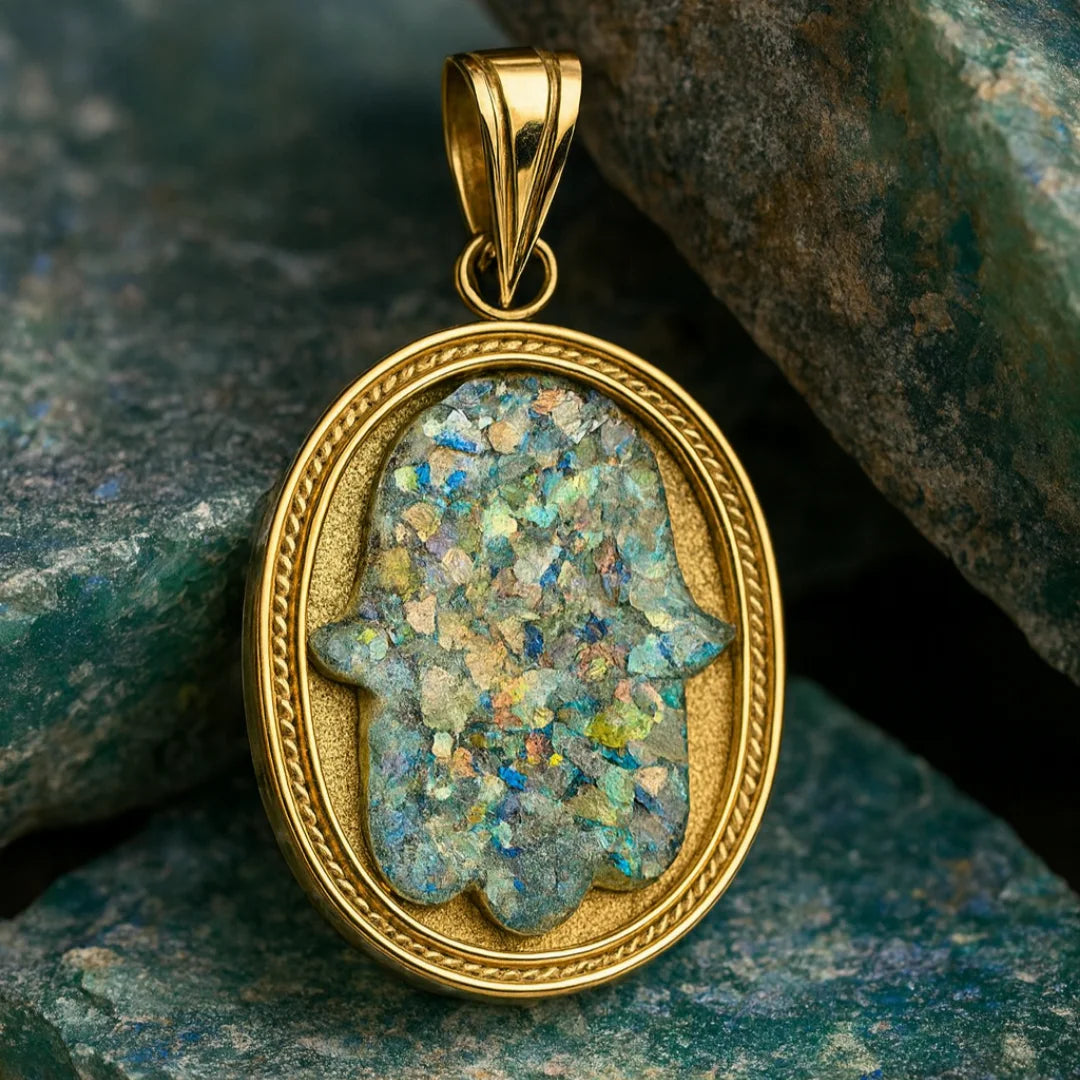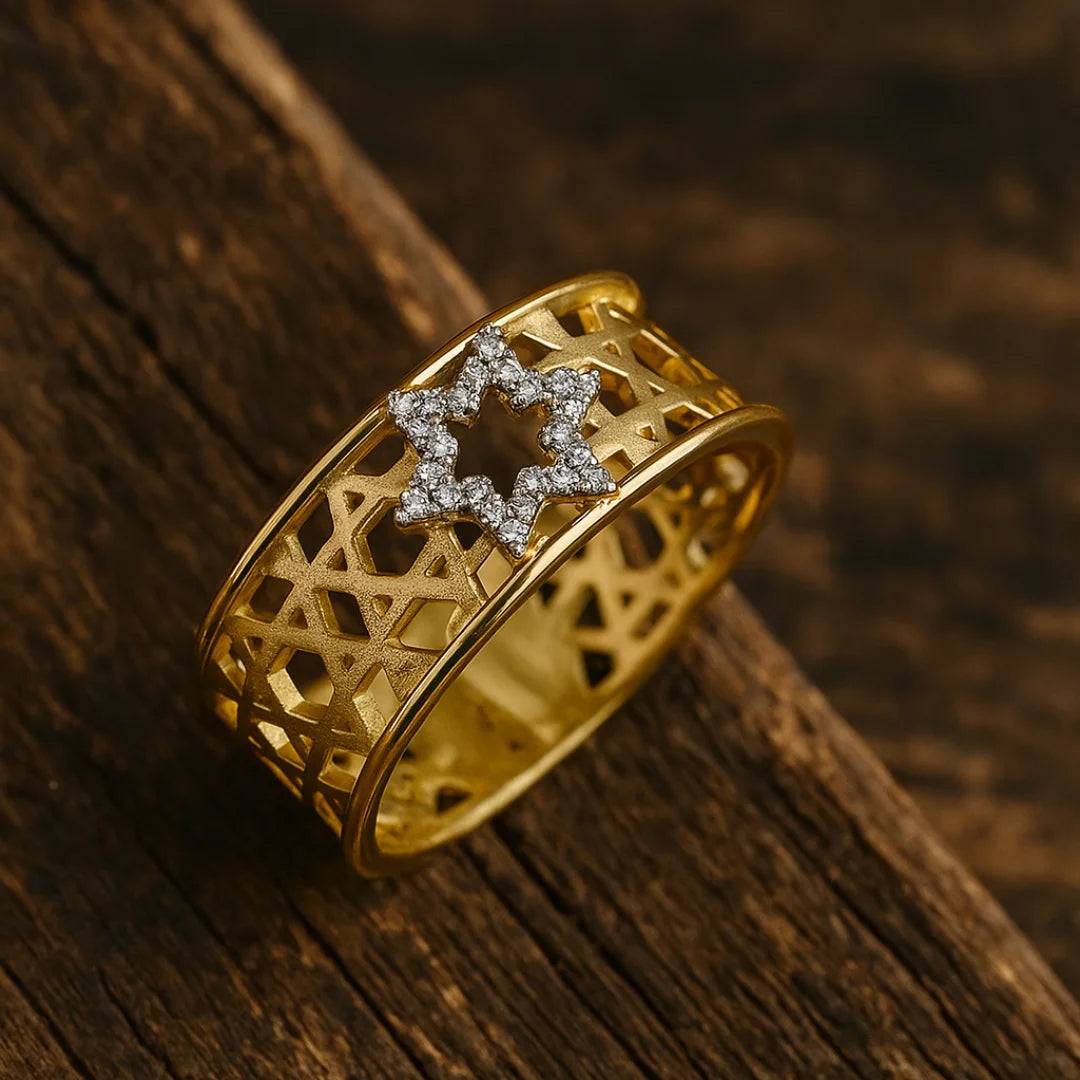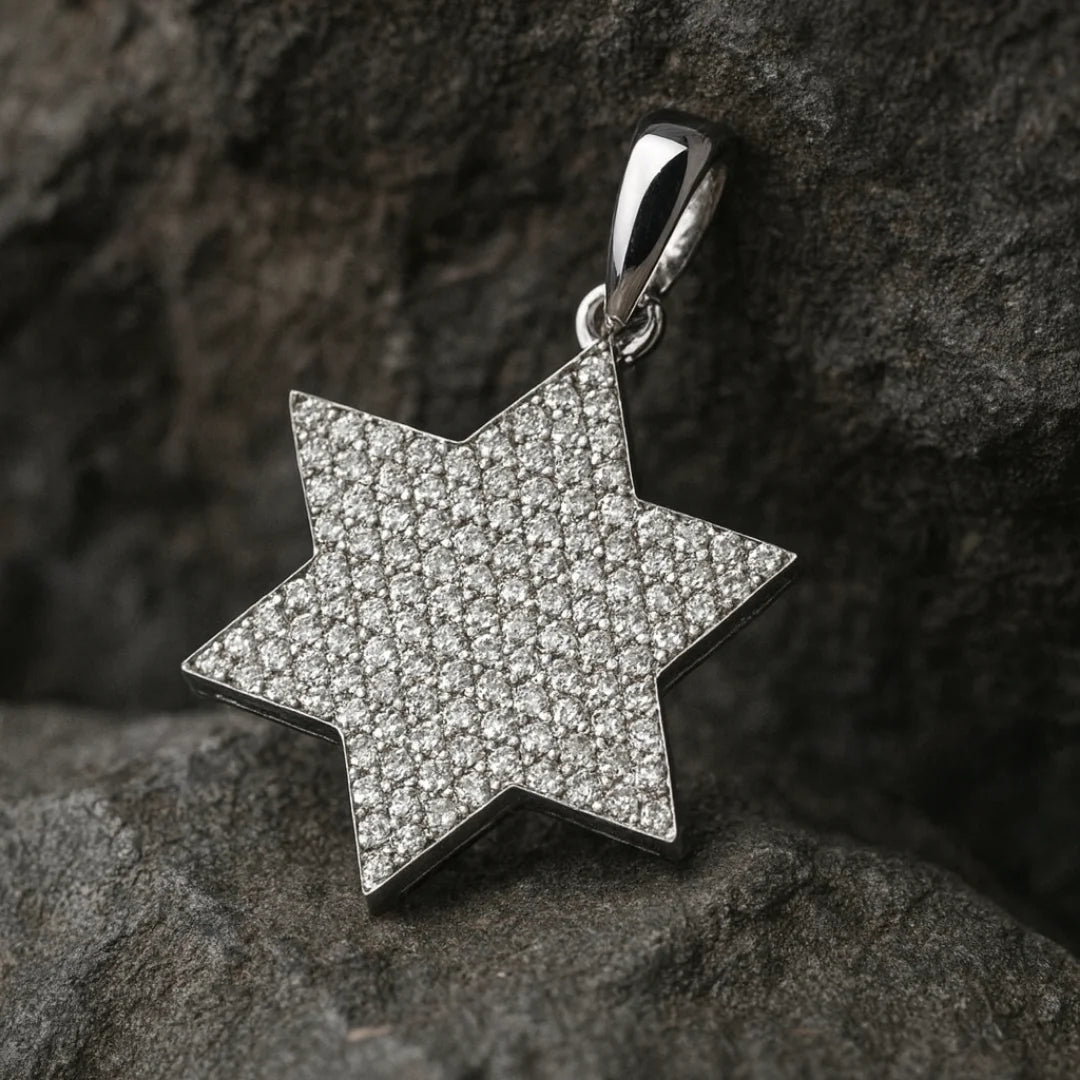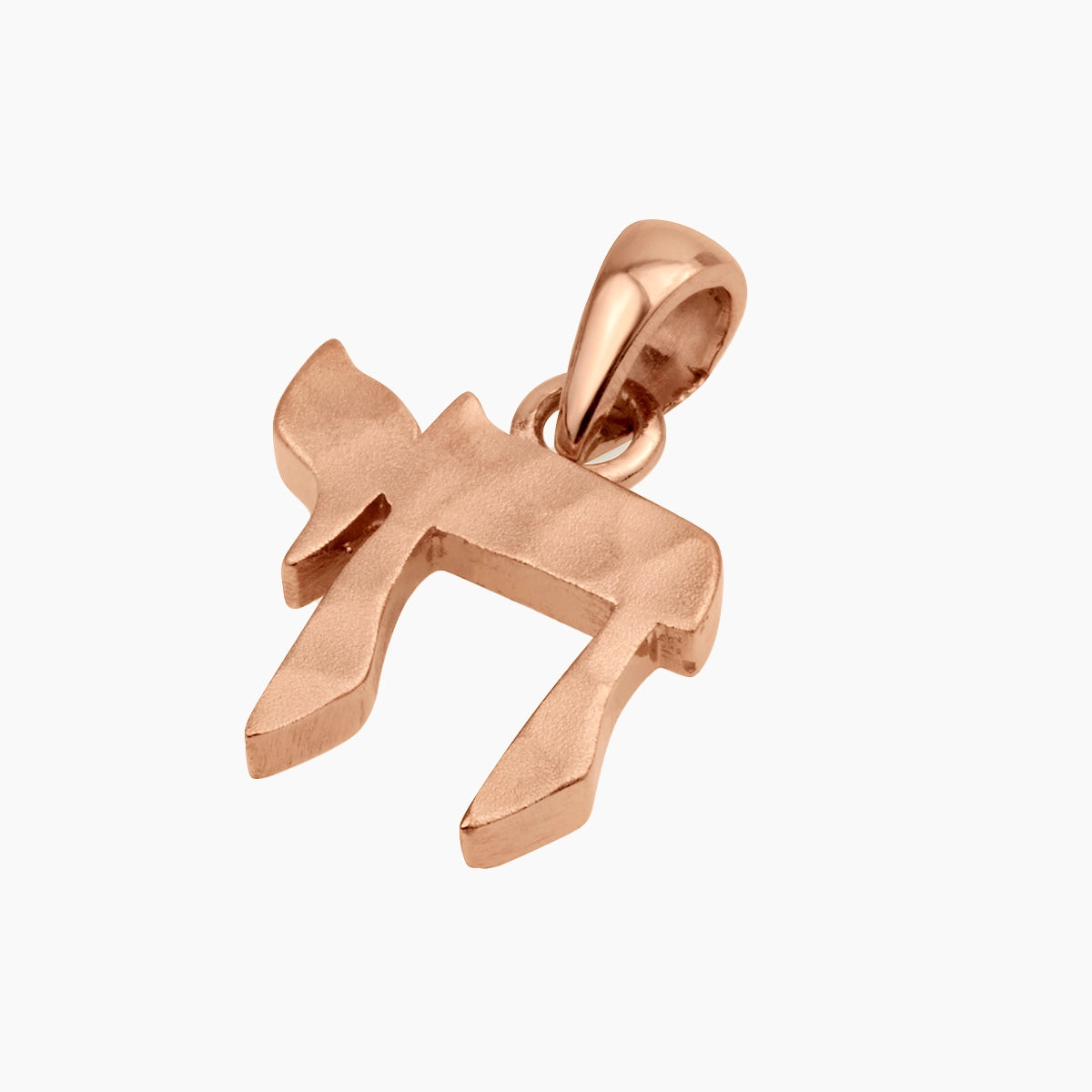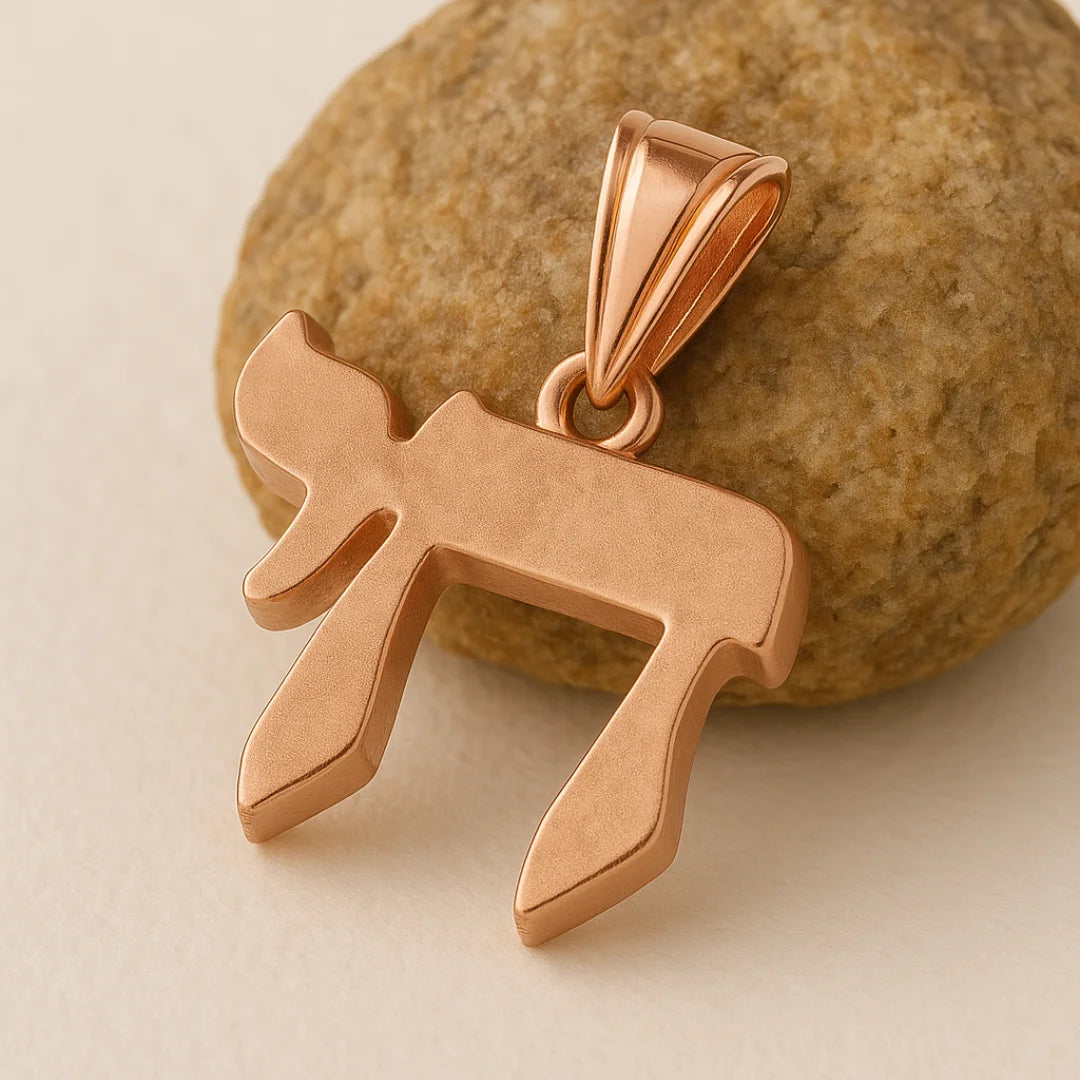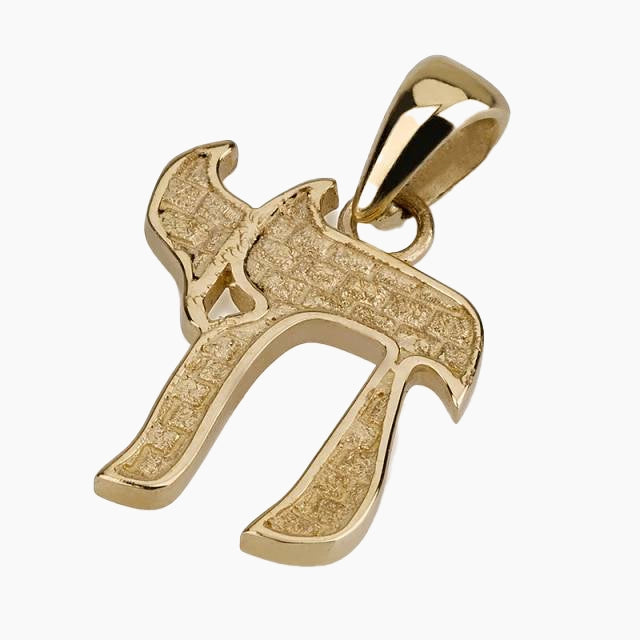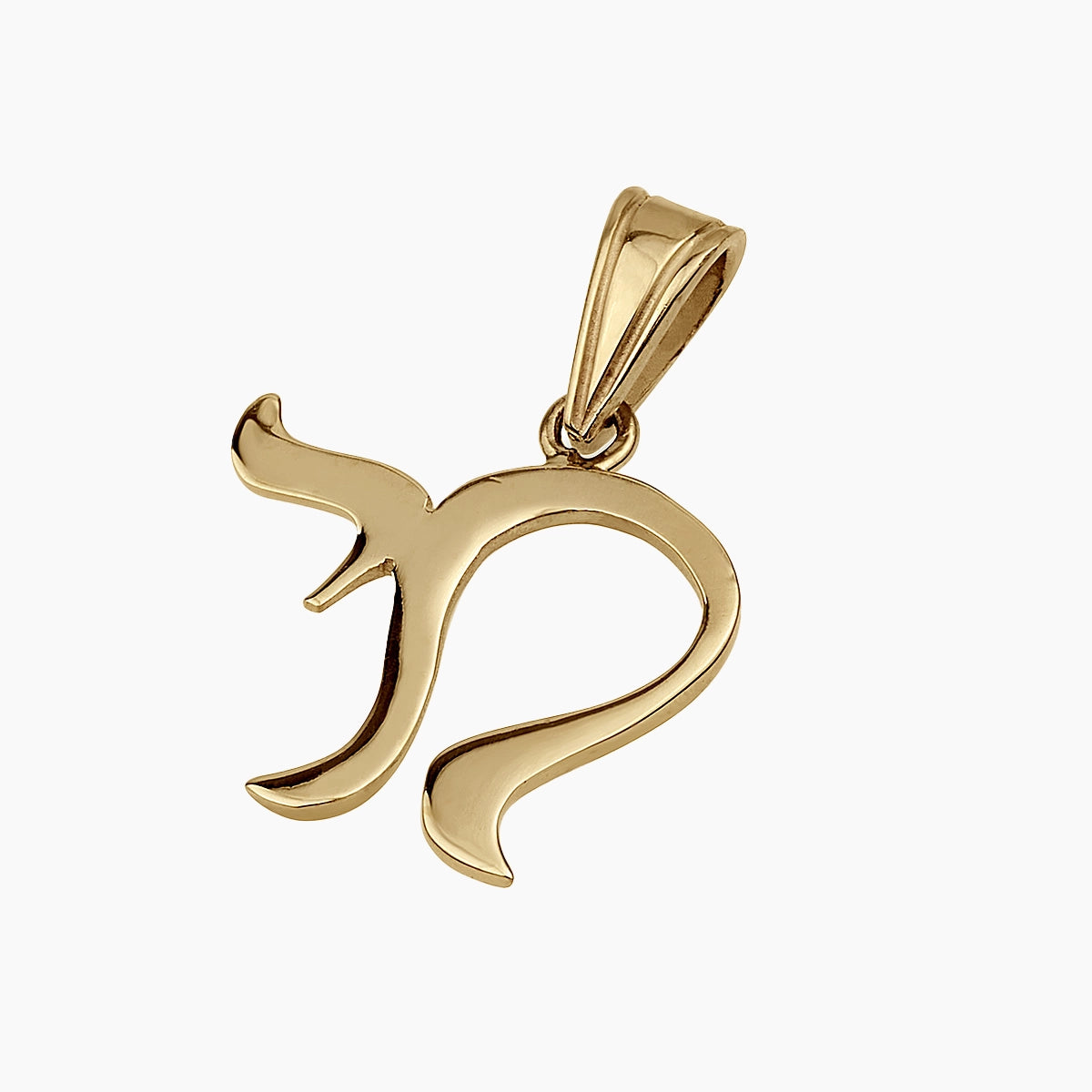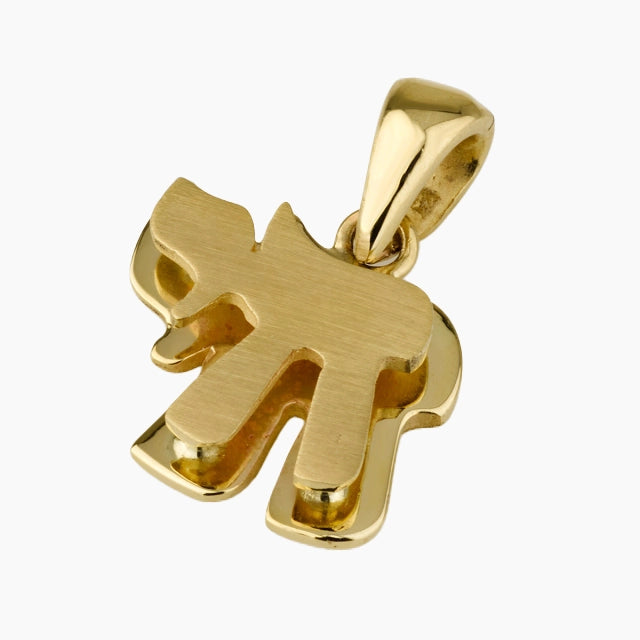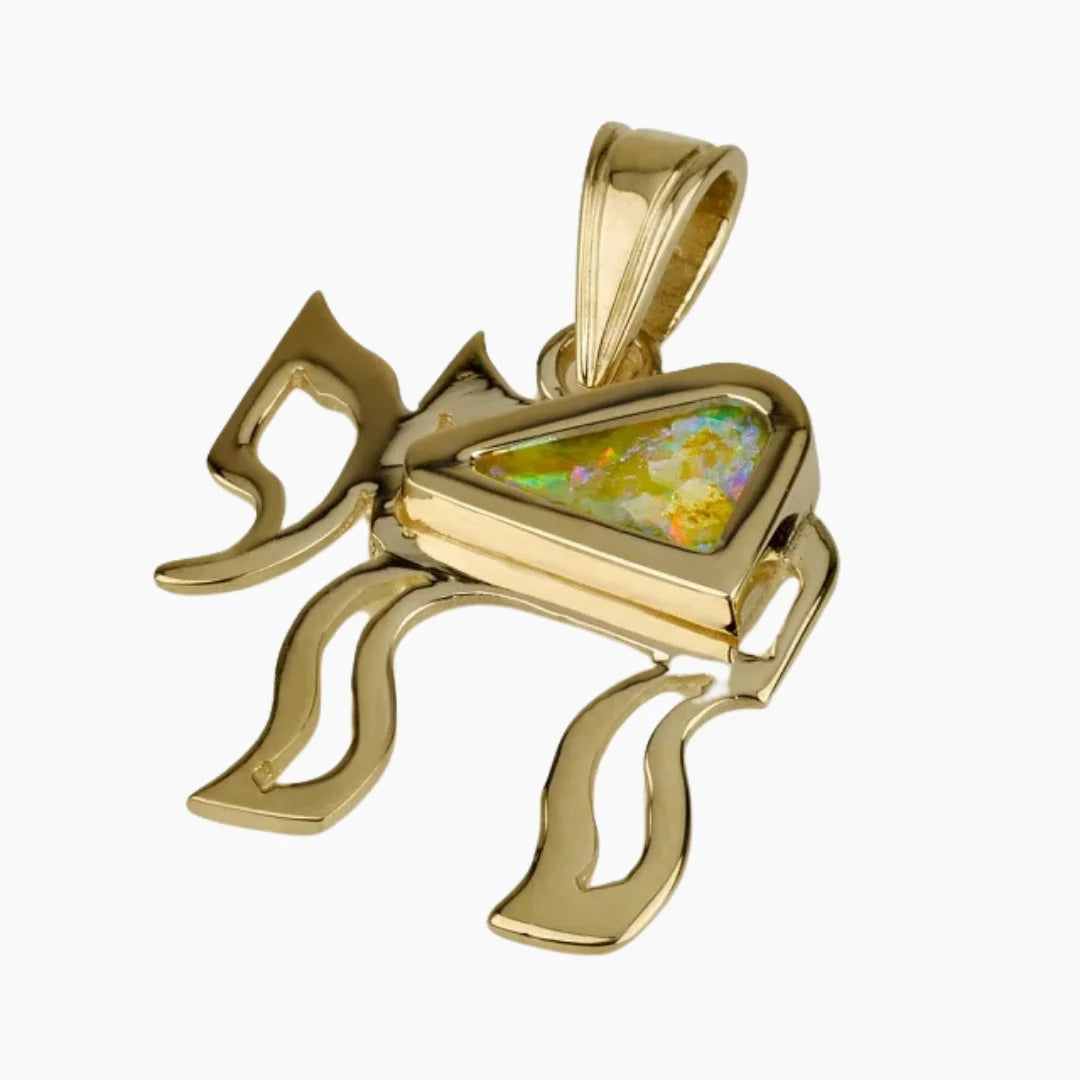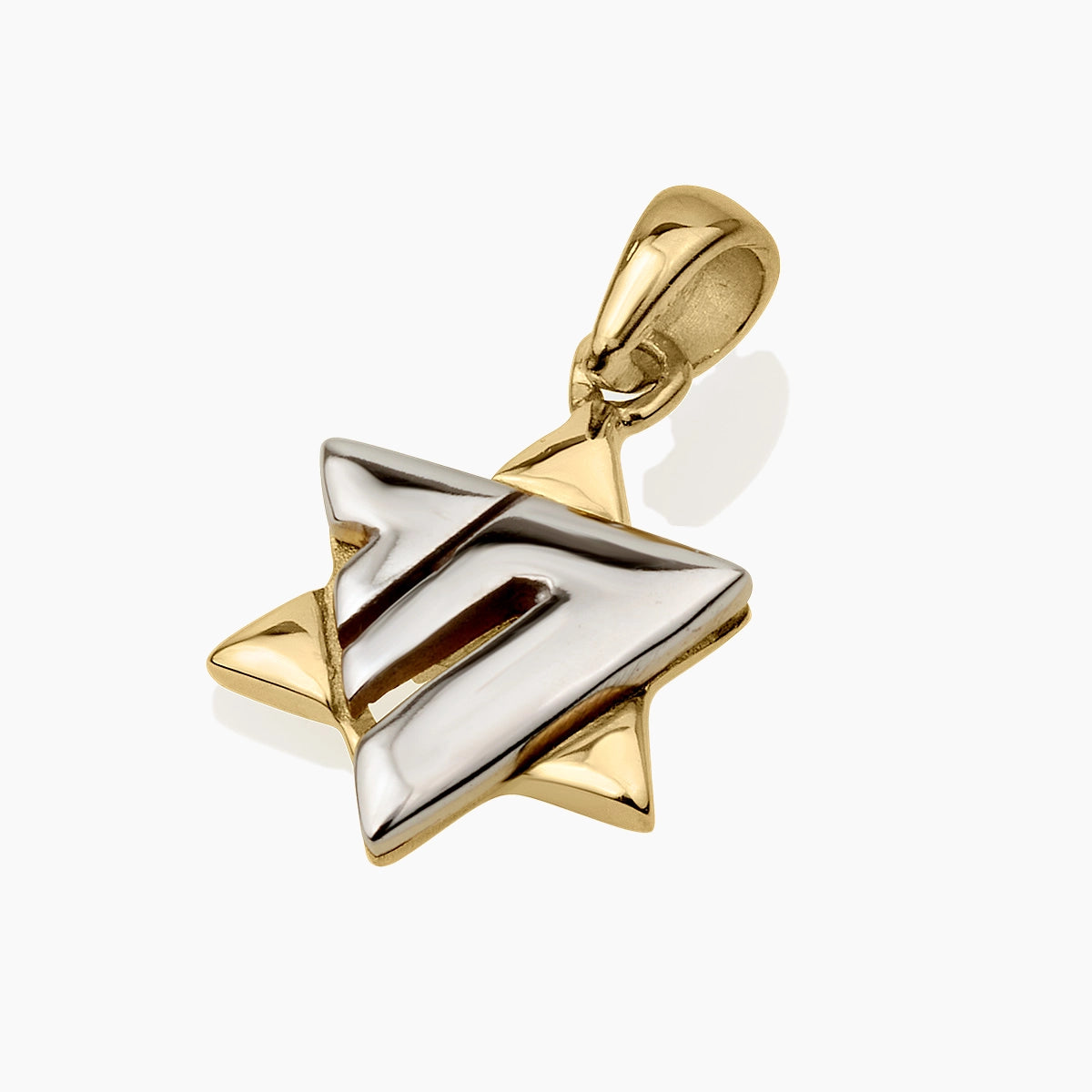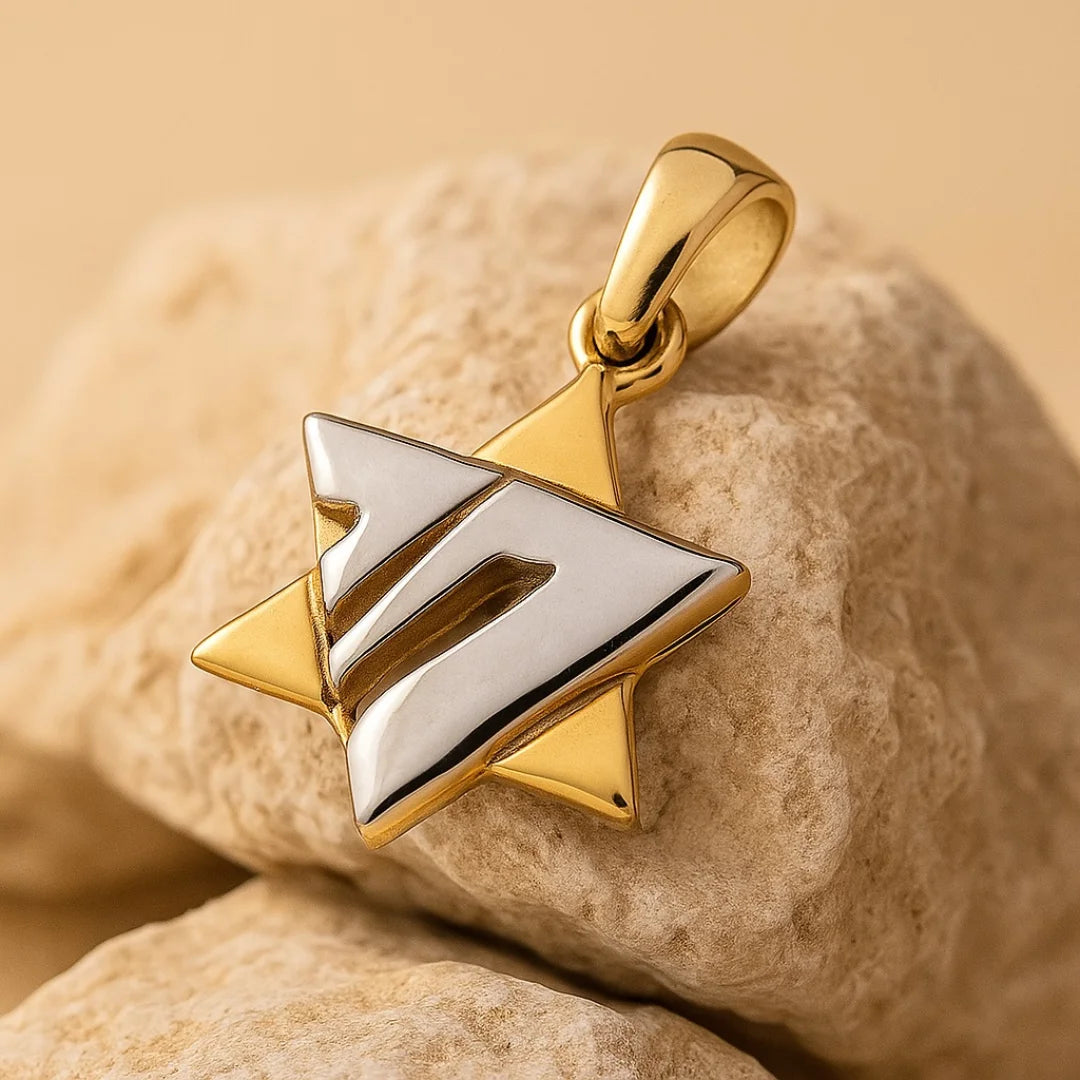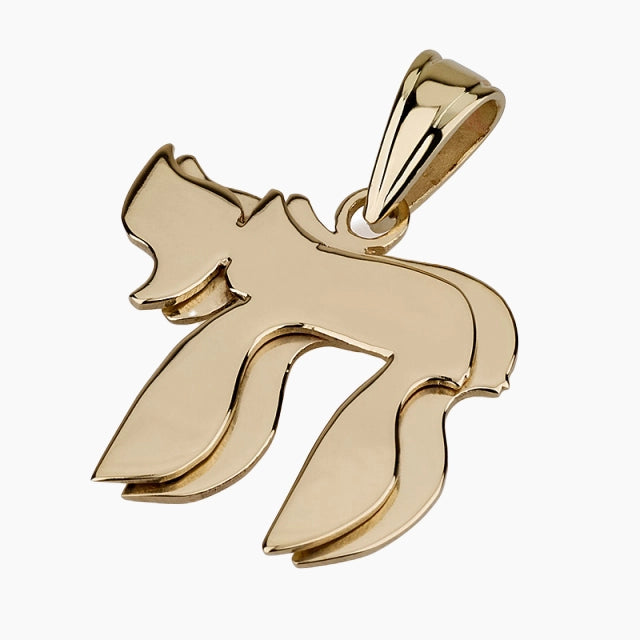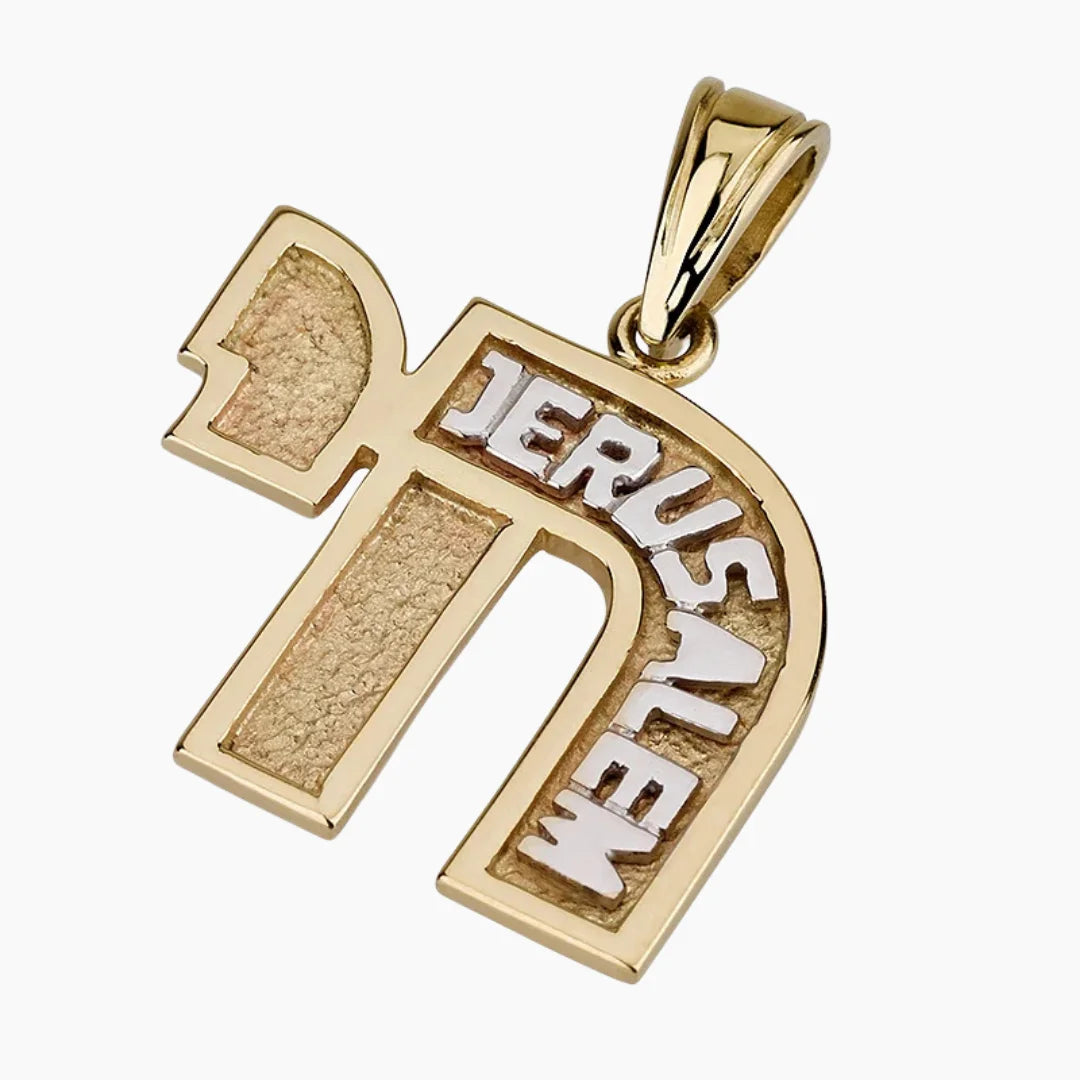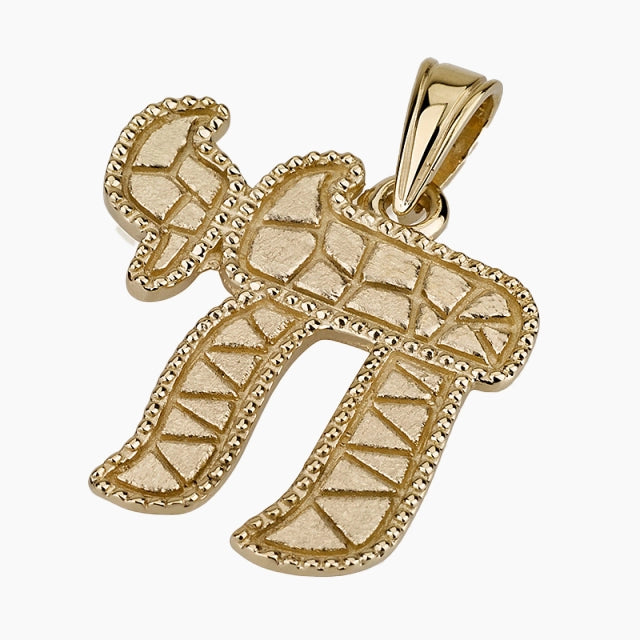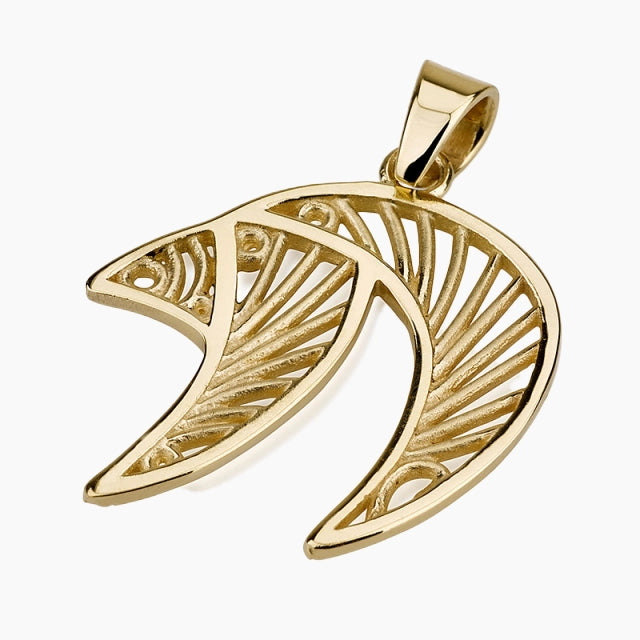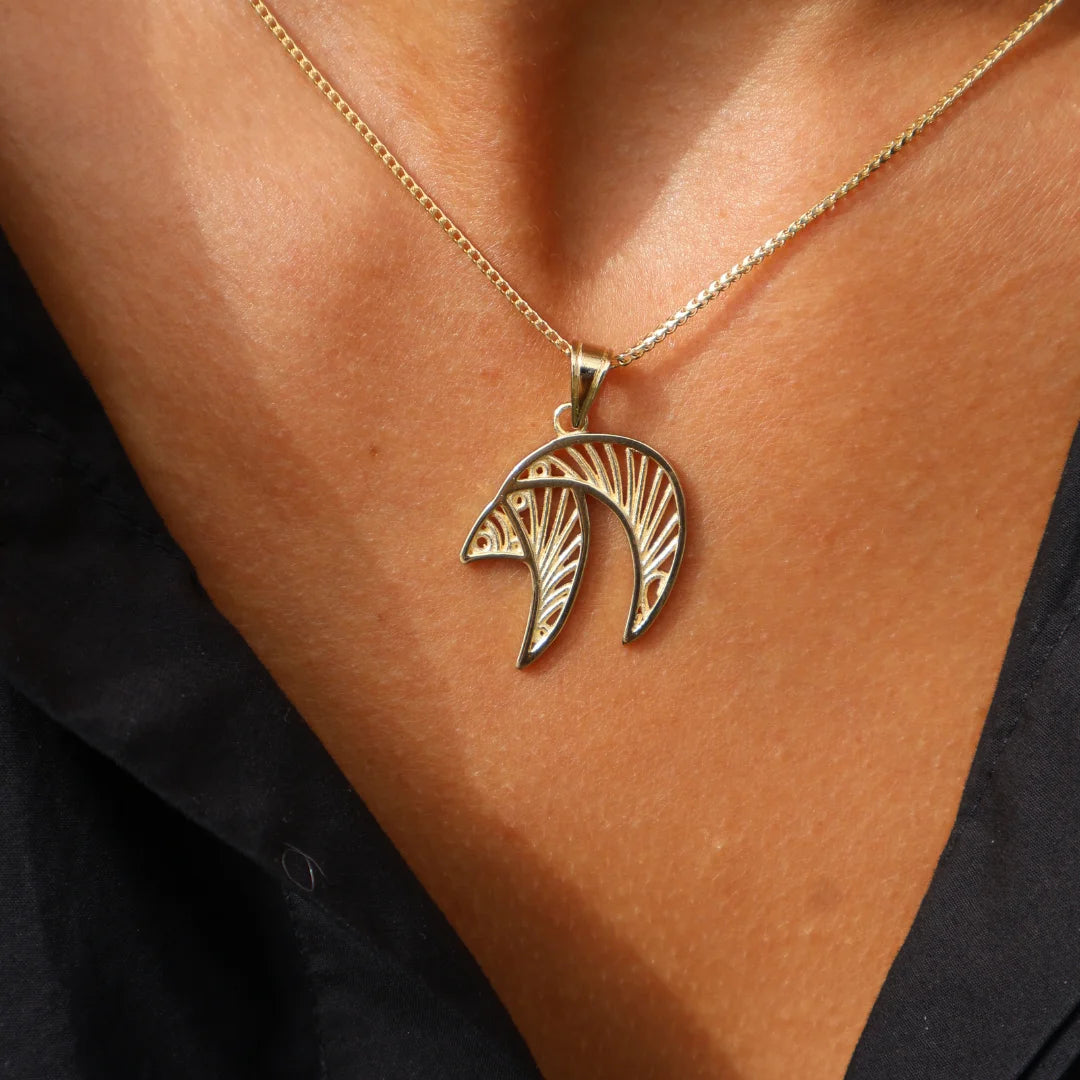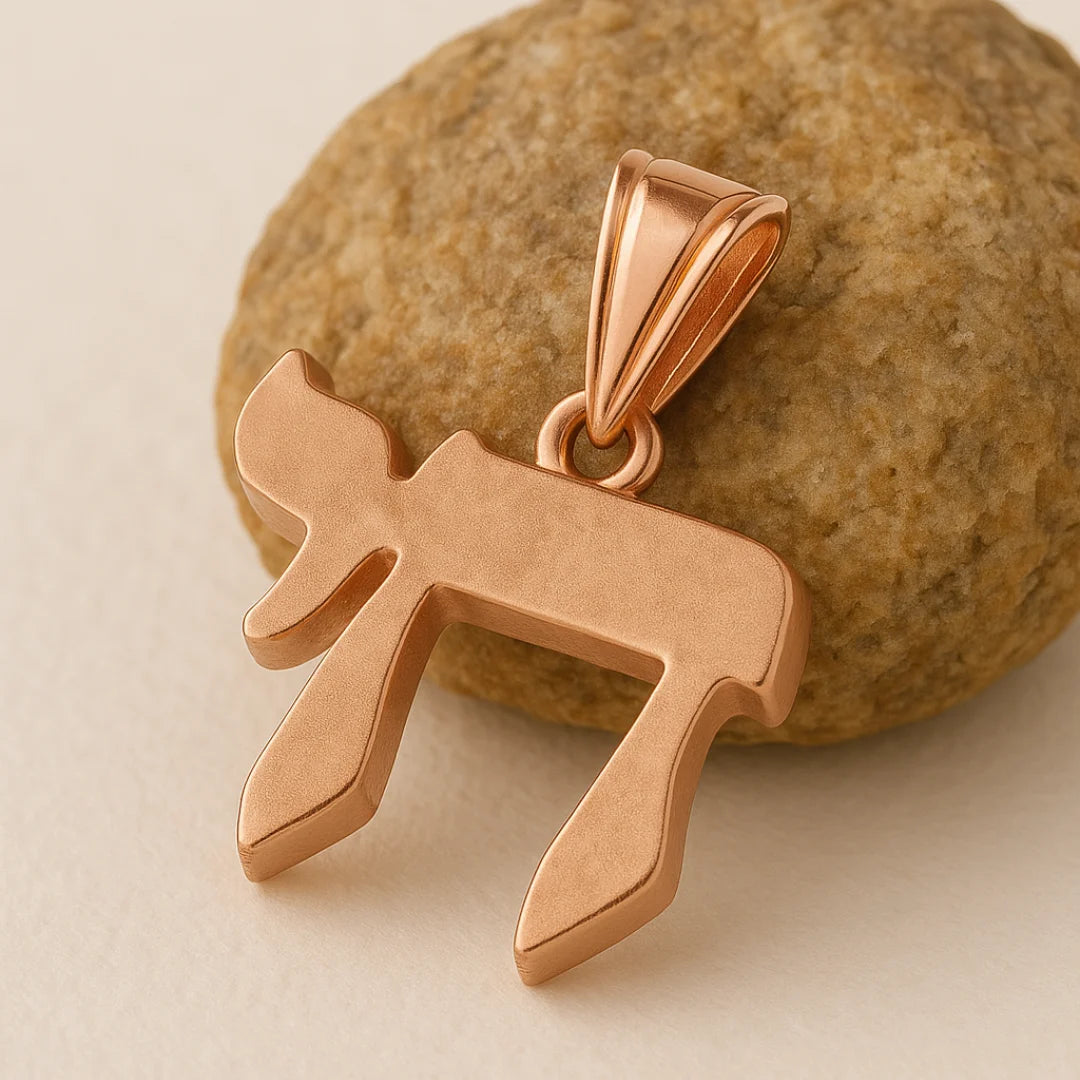
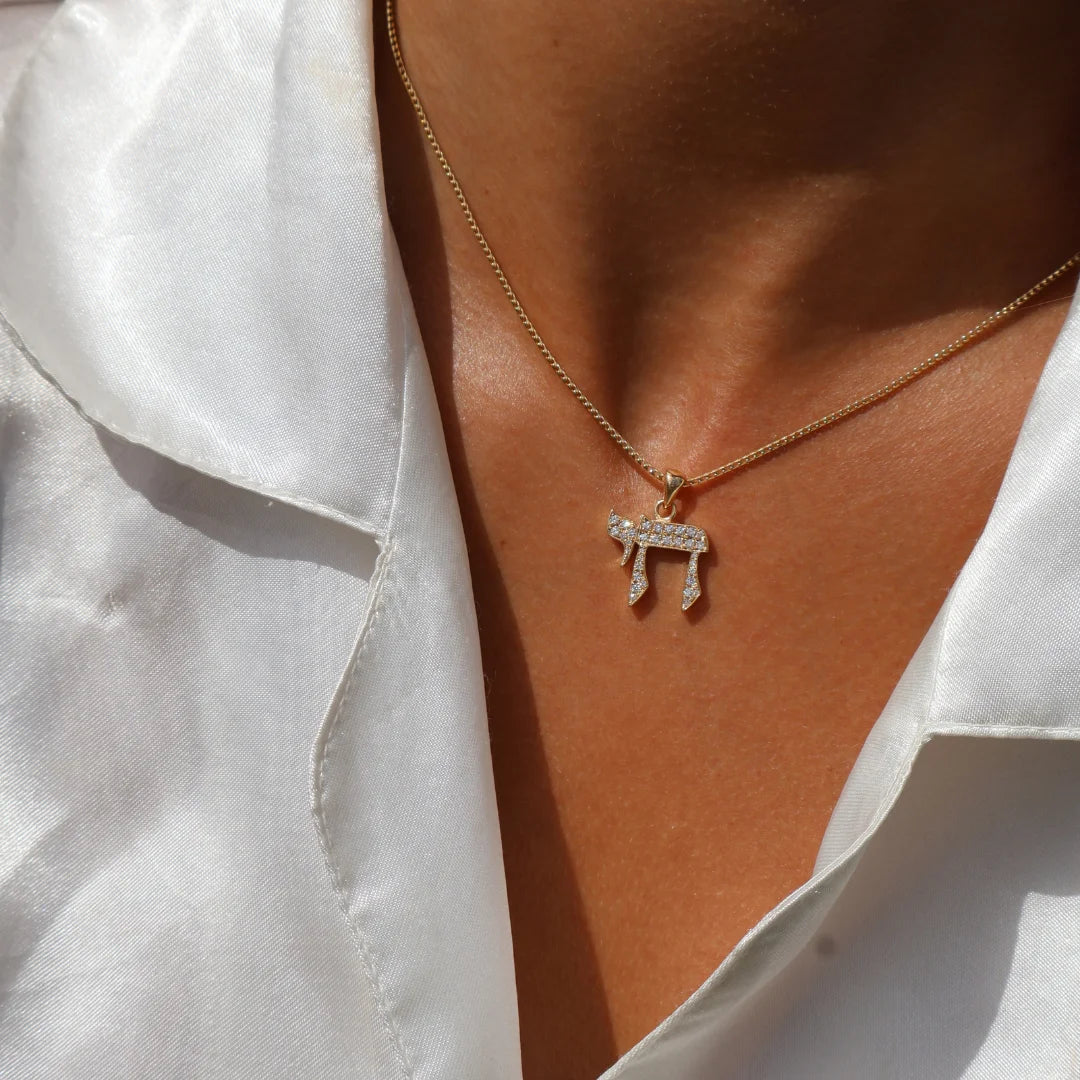
Chai
Gold Chai Chain: Why is it popular? The Tradition & Styles Explained
The word Chai (חי), a combination of the Hebrew alphabet's chet (ח) and yud (י), means "life." It is probably the most widely used and symbolic item in Judaism. Much more than two letters, Chai represents the joy in living, the beauty of survival and hope passed on by successive generations of Jews.
Why the Chai Symbol Is Worn in Gold
When crafted in gold and worn as a chain, the Chai is not only dashing but durable too. A gold Chai chain is not merely jewelry, it is a statement of heritage, an emblem of commitment and often a gift given with blessings for a lifetime. For men and women alike, to wear the Chai close to the heart is to rejoice in heritage and to carry an ageless message.
In this post, we’ll explore the meaning of the Chai symbol, its connection to the number 18, how it became jewelry, the styles of gold Chai chains available today and the role it plays in Jewish life. We’ll also answer the most common questions people ask about this enduring emblem.
The Meaning of the Chai Symbol
The Chai symbol is simple in looks but rich in meaning. Made up of two Hebrew characters, chet (ח) and yud (י), it creates the word Chai, which is the Hebrew word for "life."
What "Chai" (חי) Stands for in Judaism
In Jewish tradition, life is considered the greatest blessing. The word Chai is a constant reminder to cherish every day, live with gratitude and honor the gift of existence. You’ll hear it in toasts of l’chaim, "to life!", at weddings, Shabbat meals and celebrations. The symbol carries hope, joy and resilience, values that have guided Jewish communities for centuries.
The Number 18 and Its Spiritual Significance
In the Hebrew numerology system, also known as gematria, every letter has a number value. Chet is 8 and yud is 10, so together they make 18. Due to this combination, 18 has become symbolic of life. Blessing. Donations and offerings are often given in the multiples of 18 as a way of reciting, "may you be blessed with life."
When worn as a gold chain, the Chai is not just an ornament, but a message. It is both a reminder of the beauty of life itself and of the rich spiritual tradition that surrounds it.
From Symbol to Jewelry: The History of the Chai Necklace
The Chai symbol had existed in Jewish life since eternity but not as jewelry before. Chai was applied centuries ago in prayers, songs and blessings. It was spoken during moments of happiness and written in sacred books so that its meaning for the value of life would be recalled. Individuals applied the word as a symbolic reminder of hope and perseverance but not yet as jewelry.
How It Became a Popular Pendant
In the contemporary world, particularly in the 18th and 19th centuries, Jews started to wear Chai as jewelry, either a pendant or charm. Rotating the symbol into jewelry enabled one to carry its meaning close to them at all times. In the 20th century, the Chai necklace was one of the most well-known and treasured types of Jewish jewelry.
When crafted from gold, the Chai became even more symbolic. Gold, thought to be timeless and valuable, suited the timelessness of the message of life. A gold Chai chain became more than a piece of jewelry but an identification and declaration of beliefs, something one wore daily and would frequently pass down through generations as a family heirloom.
Types of Gold Chai Chains
Gold Chai chains come in many designs, all sharing the same strong message but wording it differently. Whether in traditional or modern forms, dainty or robust, all the designs have the timeless meaning of life.
Classic 14k and 18k Gold Designs
Real Chai necklaces are typically created in 14k or 18k gold. They focus on the letters themselves, brushed or buffed, sometimes with small engravings. They're minimalist, understated and timeless, the kind of jewelry that can be worn daily or saved for dressing up.
Modern Interpretations and Minimalist Looks
In recent years, designers have created sleek and minimalist interpretations of the Chai. Some are thin outlines, geometric forms, or patterns combined with other symbols like the Star of David. Others use white or rose gold in a reinterpretation of the tradition.
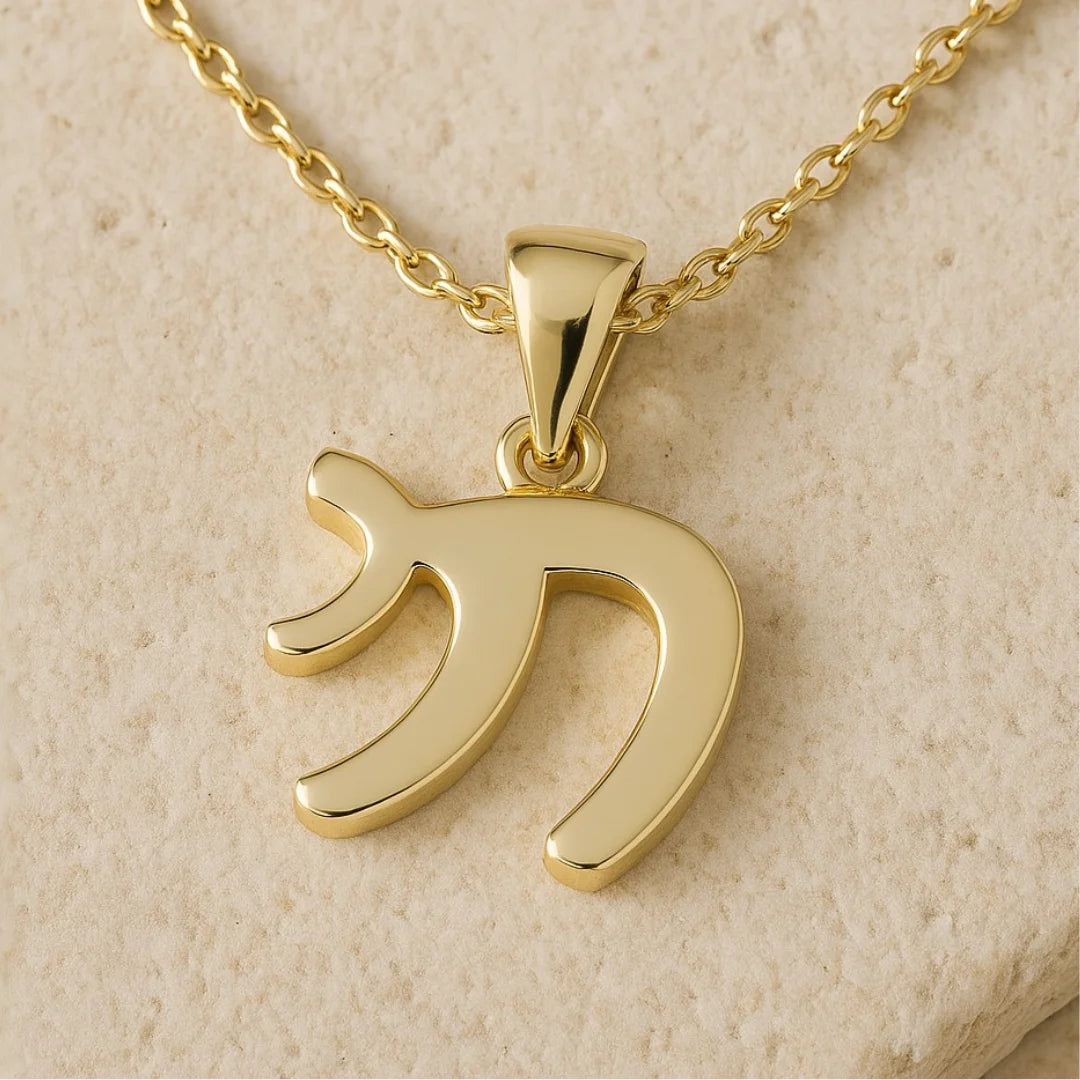
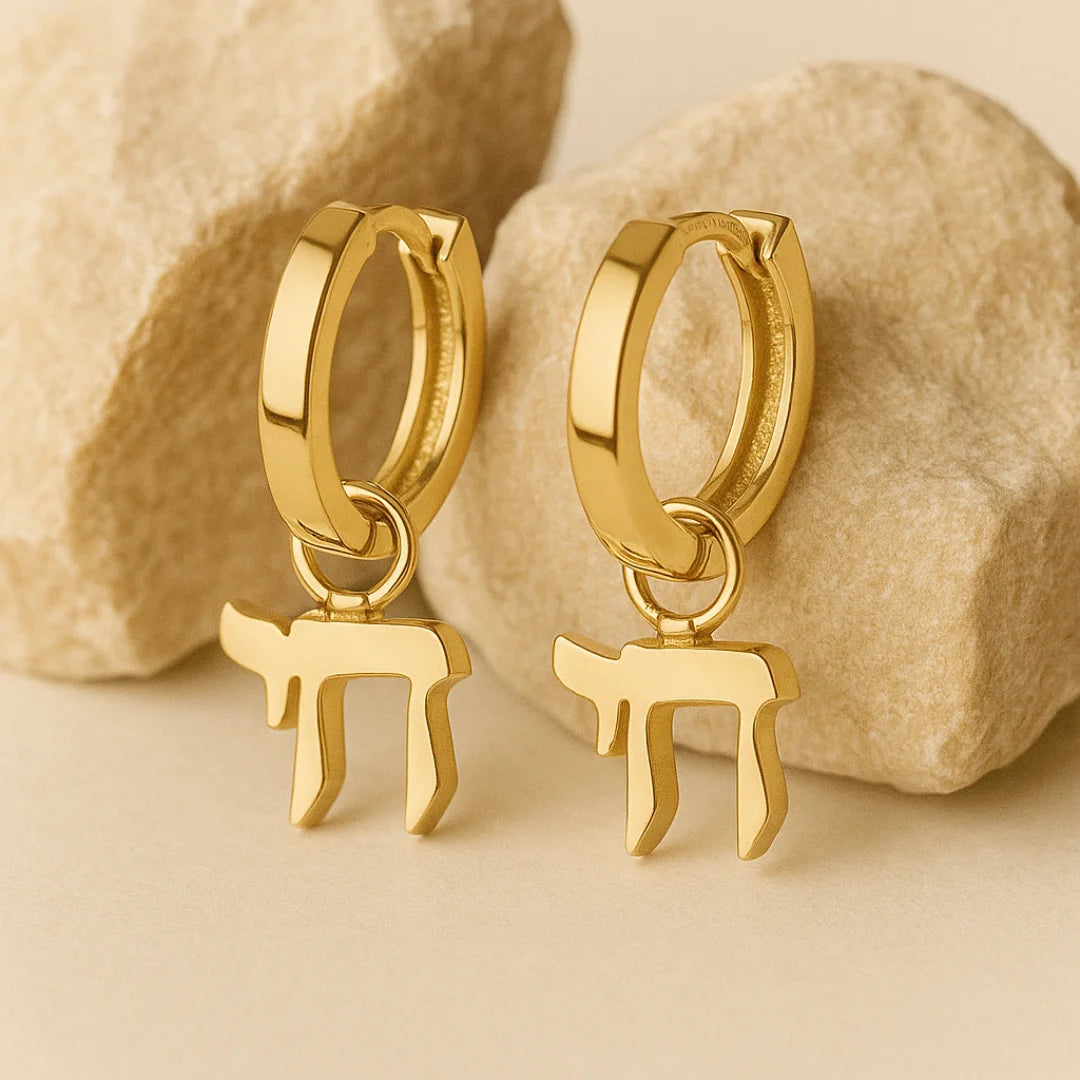
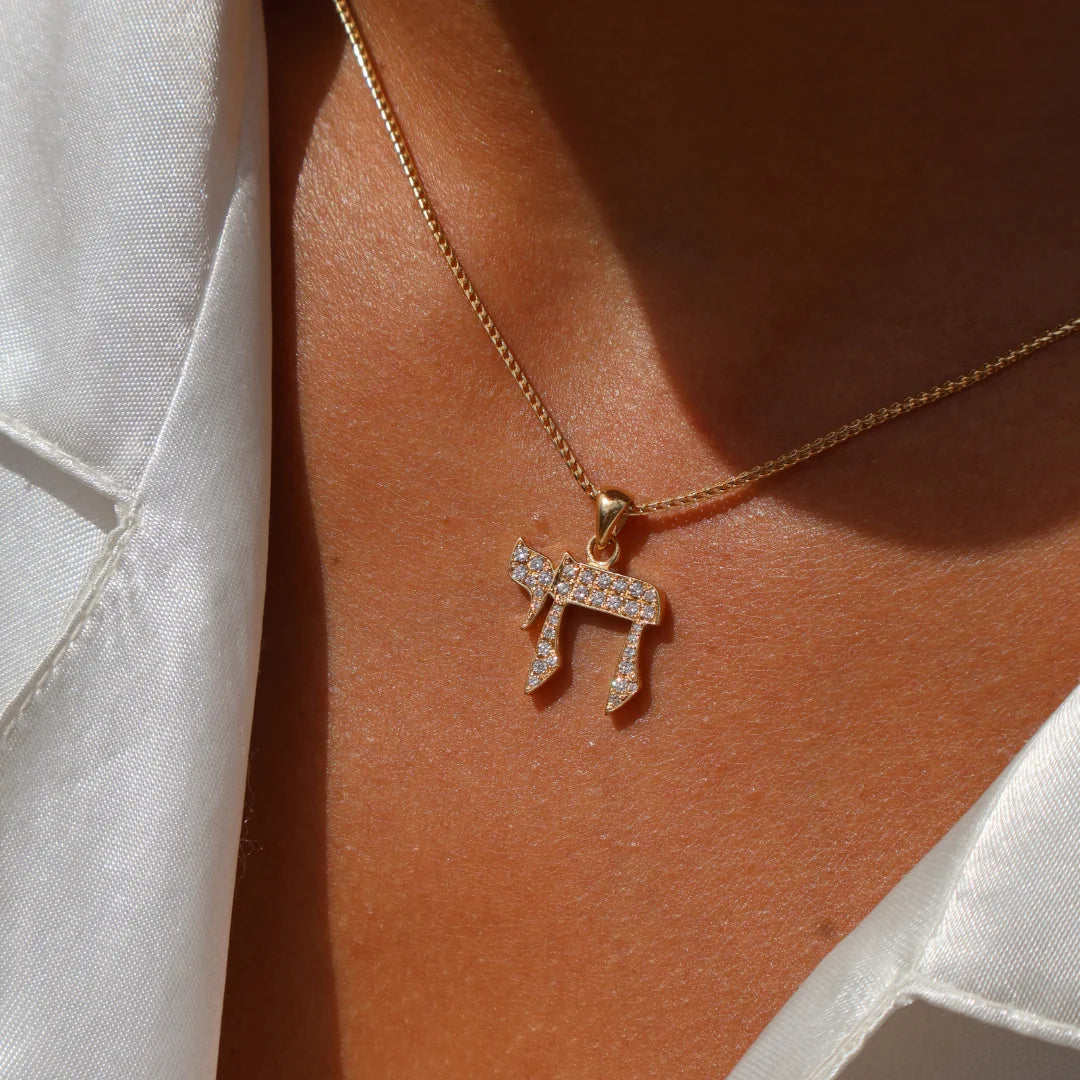
Chai Jewelry for Men
Men's gold Chai chains tend to be bigger and bold. Heavy chains with solid gold pendants, heavy engravings, or stacked styles are popular. These styles highlight the strength and visibility, yet maintain the deep symbolism of the symbol.
Women's Chai Jewelry
Women's designs are dainty and refined. They may incorporate diamond accents, gemstone settings, or innovative flourishes. Others are created as charms that can be layered with other necklaces, making them contemporary and expressive.
From bold men's pendants to chic women's pieces, gold Chai chains illustrate how a single resilient word can generate infinite designs.
The Chai as a Personal and Communal Symbol
Chai is not just a trend, it's a message that carries both personal meaning and common heritage. For other Jews, wearing a gold Chai chain is a way of being comfortable with religion and identity. It is a discreet reminder of being the Lord's own, heritage and resilience. Some interpret it as safeguarding too, carrying strength and solace with them in their daily lives.
Chai as a Gift and Blessing
Chai jewelry is often given at life's greatest junctures, bar and bat mitzvahs, weddings, anniversaries and births. As Chai means "life," to give a gold Chai chain as a gift is like giving a blessing: hoping for a wealthy, contented and long life. Giving multiples of 18 in gifts or donations is also traditional, extending blessings of life through charity.
Therefore, the Chai is personal and collective, a piece of jewelry that holds stories, blessings and love passed on from one generation to the next.
Featured collection
Chai Pendants
Heritage 14K Rose Gold Chai Pendant
Eternal 14K Gold Western Wall Chai Pendant
Heritage 14K Gold Chai Pendant
14K Gold Chai Double layer unique Pendant
Heritage 14K Gold Chai Pendant with roman glass
Eternal 14K Gold Star of David Pendant With Chai
14K Gold Layered Chai Pendant
14K Gold Chai Jerusalem Pendant
Inspired 14K Gold Chai Pendant
Heritage 14K Gold Chai Pendant
Frequently Asked Questions
A Chai necklace represents "life." The Hebrew word Chai (חי) is a reminder to live fully and gratefully. When worn as a piece of jewelry, it is a symbol of commitment, courage and hope carried close to one's heart.
Chai necklaces are being sported by Jews all over the world, men, women and children. They are also used as a gift at bar and bat mitzvahs, weddings and other significant events, but they are also worn daily by many as a personal affirmation of religion and identity.
Yes. While the Chai symbol is most associated with Jewish tradition, it is available to anyone willing to show respect for its meaning. For those who are not Jewish, perhaps it is a way of showing honor to loved ones, standing in solidarity, or even simply celebrating the universal value of life.
The main tradition is to give gifts associated with the number 18, as Chai letters equal 18 in Jewish numerology (gematria). A Chai chain made of gold, for example, can be given with a donation or gift in multiples of 18 as a token of giving blessings of life.
The number 18 is important in that it is a symbol of Chai, or "life". Donating in amounts of eighteen in Jewish tradition is a way of giving a blessing of life, health and prosperity. That is why the number appears everywhere in charity, celebration and donating.
A Chai chain of gold is not merely jewelry, but a living symbol. Containing only two Hebrew letters, Chai (חי), it contains the heart of Judaism: the blessing of life itself.
Worn on the neck, it is deeply personal, a sign of faith, identity and empowerment near the heart. As a gift, it is a benediction, passed from one person to another in love and hope for a fruitful and fulfilling life.
Whether dainty or bold, men's or women's, classic or modern, every gold Chai chain expresses the same timeless message: to live life joyously, to pay tribute to heritage and to keep faith burning for generations to come.
Am Israel Chai!

